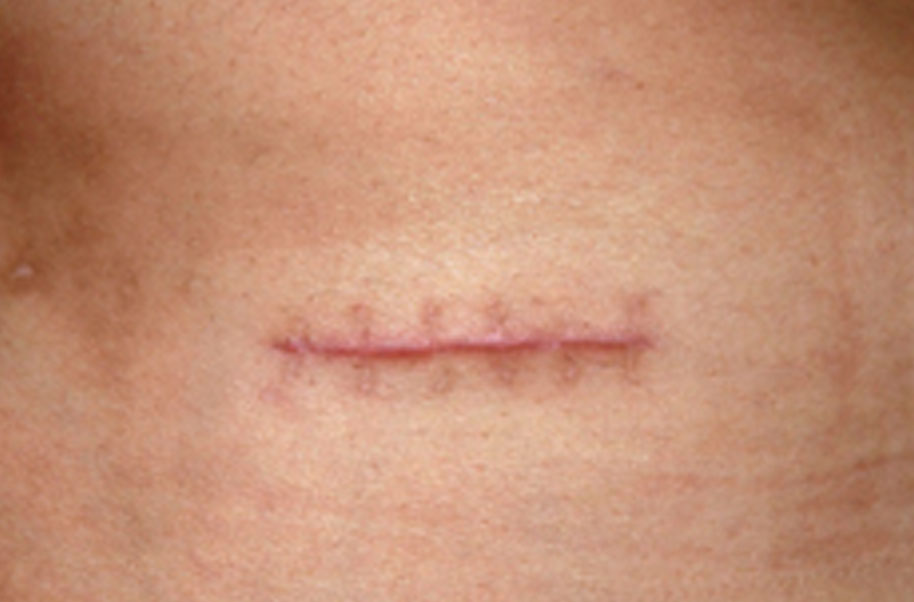Diseases
Scar Tissues
The connective tissue forming a scar and composed chiefly of fibroblasts in recent scars and largely of dense collagenous fibers in old scars.
Scars facts
scars occur when tissues have been significantly damaged and repaired.
scars result in changes that alter the physical architecture of normal skin or other tissue.
scars can occur after physical trauma or as part of a disease process.
poorly controlled wound healing can result in thick, unsightly scars that cause symptoms.
there is a genetic predisposition in some people to produce thicker, itchy, enlarging scars called keloids.
scarring in areas of increased skin tension or movement tend to be unsightly.
when wounds are produced surgically, physicians utilize techniques to minimize scarring.
What is a scar?
Scarring is the process by which wounds are repaired. Damage to the deeper layer of the skin, the dermis, is required to produce a scar. Damage to only the epidermis, the most superficial layer of skin, will not always produce a scar. Scars produce a structural change in the deeper layers of the skin which is perceived as an alteration in the architecture of the normal surface features. It is not just a change in skin color. Fetal tissues and mucosal tissues have the ability to heal without producing a scar. Understanding how and why this is possible could lead to better surgical scar outcomes.
What are the different types of scars?
There is only one type of scar. The appearance of a scar depends on the nature of the wound that produced the damage, the anatomical location of the wound, and a variety of genetic factors that are different for each individual.
A defective healing process can result in a keloid, an unsightly, itchy, thick, red, knobby bump that often continues to enlarge over time. Keloids often are larger than the margins of the original wound.
What causes a scar?
The normal healing process in human tissue results in a scar.
What are symptoms and signs of a scar?
Scars occur at the site of tissue damage and appear as firm red to purple fibrous tissue that over time usually becomes flatter and lighter in color.
How do health-care professionals diagnose scars?
Scars are almost always diagnosed by visual inspection. There are a number of rare situations when it may be necessary to examine scar tissue under the microscope to confirm its true identity. This would require a biopsy of the skin and may require the injection of a local anesthetic. Sometimes other skin conditions can form in a scar and require a biopsy in order to be diagnosed.
What is the treatment for a scar?
Since scars are part of the normal healing process, ordinary scars are not treated. Only when superficial scars become cosmetically undesirable do they require treatment. This would include scars in those who are predisposed to develop keloids, as well as scars in anatomical regions known to produce thick scars and scars that produce a significant, unpleasant distortion of adjacent anatomical structures. Thick scars and keloids often flatten out after injections of steroids directly into the fibrous scar tissue. They can respond to the chronic application of pressure and the application of sheets of silicone rubber. Thick scars can be flattened by dermabrasion, which utilizes abrasive devices to sand down elevated scars. Certain types of depressed scars can be elevated by the injection of a cosmetic skin filler. Certain types of facial scarring respond well to forms of laser treatments. Occasionally, surgical revision of scars can result in a different scar that is much more cosmetically desirable. Since it takes about a year for scars to mature, it is frequently prudent to wait before starting any invasive surgical revisions.
Can scarring be prevented?
Scarring is an integral part of the healing process. Assuming the wound does not become infected, physicians plan excisions to minimize the cosmetic defects produced by scars. This can be accomplished by orienting the wound in such a way so that it will not perturb other structures, so that the scar can be camouflaged by hiding in wrinkle lines or near other anatomical structures. It is also important to minimize the tension necessary to close the wound surgically.
SYMPTOMS
- Severe abdominal pain or cramping.
- Vomiting.
- Bloating.
- Loud bowel sounds.
- Swelling of the abdomen.
- Inability to pass gas.
- Constipation.
CAUSES
Scars form when the dermis (deep, thick layer of skin) is damaged. The body forms new collagen fibers (a naturally occurring protein in the body) to mend the damage, resulting in a scar. The new scar tissue will have a different texture and quality than the surrounding tissue.




Chitradurga
Seebara, Behind Indian Oil Petrol Bunk, Basavakumara Swamy Mutt, Chitradurga - 577504
Kunigal
K Huraliborsandra, Gowdgere Post, Dhomratti Temple Road, Kunigal, Tumakuru District. - 572130
Bengaluru
36, KG Gollarapalya, Bolare (P), Kanakapura Road, Bengaluru - 560082

